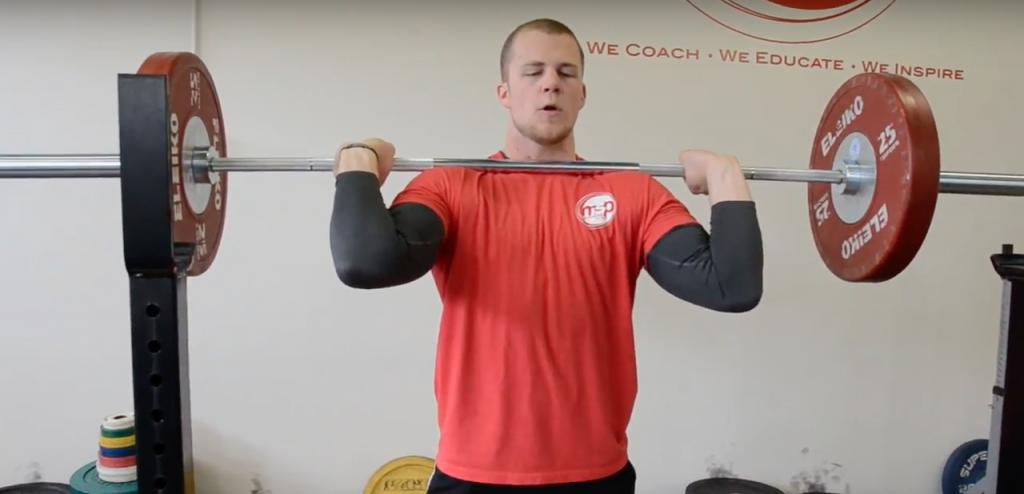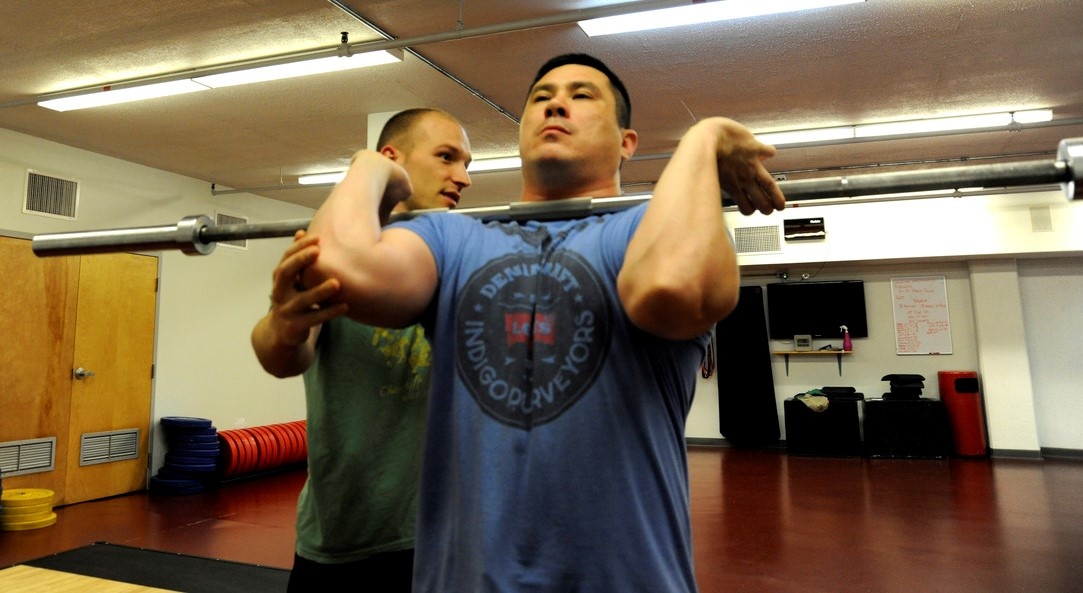
- #Front squat how to#
- #Front squat full#
Upward Movement Phase (Figures 3A, B and 4A, B)
Moments arms are similar for both hip and knee joints (2B). The line of external force should extend through the mid to rear foot (2B).  Elbows are up and parallel to the floor (2A). Kneecaps are in-line with the angle of the feet (2A). At the bottom of the front squat (Figures 2A, 2B). The hips tuck under (posterior tilt of the pelvis). The trunk begins to round or flex forward. Continue flexing the hips and knees until the thighs are parallel or just below parallel to the floor,. Do not flex the torso forward or round the back. The knees should remain aligned over the feet with the knees just over or slightly in front of the toes. The elbows should remain up and parallel to the floor. The lifter pushes the knees forward to assist the trunk to remain upright. The lifter begins the descent by allowing the hips and knees to slowly flex (2A, 2B). Maintain a position with the back flat, elbows high, and the chest up and out. Stance width should be wider than shoulder width (individualized based on segment lengths) (Figure 1A). The lifter should be looking straight ahead. Elbows up positions the chest up and out. Push the elbows up to position the upper arms parallel to the floor. Move up to the bar to place it on top of the anterior deltoids and clavicles. Your Grip should be slightly wider than shoulder width. An alternative method is having the bar rest on the fingertips.
Elbows are up and parallel to the floor (2A). Kneecaps are in-line with the angle of the feet (2A). At the bottom of the front squat (Figures 2A, 2B). The hips tuck under (posterior tilt of the pelvis). The trunk begins to round or flex forward. Continue flexing the hips and knees until the thighs are parallel or just below parallel to the floor,. Do not flex the torso forward or round the back. The knees should remain aligned over the feet with the knees just over or slightly in front of the toes. The elbows should remain up and parallel to the floor. The lifter pushes the knees forward to assist the trunk to remain upright. The lifter begins the descent by allowing the hips and knees to slowly flex (2A, 2B). Maintain a position with the back flat, elbows high, and the chest up and out. Stance width should be wider than shoulder width (individualized based on segment lengths) (Figure 1A). The lifter should be looking straight ahead. Elbows up positions the chest up and out. Push the elbows up to position the upper arms parallel to the floor. Move up to the bar to place it on top of the anterior deltoids and clavicles. Your Grip should be slightly wider than shoulder width. An alternative method is having the bar rest on the fingertips. #Front squat full#
Some lifters may not be able to fully grasp the bar with full closed, pronated grip. Grasp the bar with a closed, pronated grip. Place the hands on the bar in a Parallel arm position. Step under the bar and position the feet parallel to each other. This placement on the front shifts the center of mass forward and gives your clients a more upright posture which makes the Front Squat friendlier on the spine, and a better choice for clients who have difficulty with Back Squats, pre-existing back or shoulder injuries, or a limited range of motion.Ī Front Squat also shifts some of the work from your client’s glutes to their quads which makes this one of the most effective lifts for increasing quad strength and size. 
The Front Squat is a lower-body exercise that when performed properly will strengthen your client’s legs and hips, especially their quads and glutes.įront Squats are similar to Back Squats ( High Bar and Low Bar Squats), however, the bar is placed on the front side of your client’s shoulders instead of their upper back or traps. WEBCLASS: Corporate Fitness & Wellness Careers.
#Front squat how to#
WEBCLASS: How to Use Online Coaching Software.

WEBCLASS: Sports Nutrition Specialist Certification. WEBCLASS: Triathlon Coach Certification & Business. WEBCLASS: Biomechanics for Trainers & Coaches. WEBCLASS: Group Exercise Instructor Careers. WEBCLASS: Make $50k/yr as an Online Coach. WEBCLASS: Holistic Life Coaching Careers. WEBCLASS: Master Health & Wellness Coach Careers. WEBCLASS: Fitness Nutrition Coach Certification. WEBCLASS: Lifestyle & Weight Management Careers. WEBCLASS: MMA Fitness & Conditioning Coach.







 0 kommentar(er)
0 kommentar(er)
